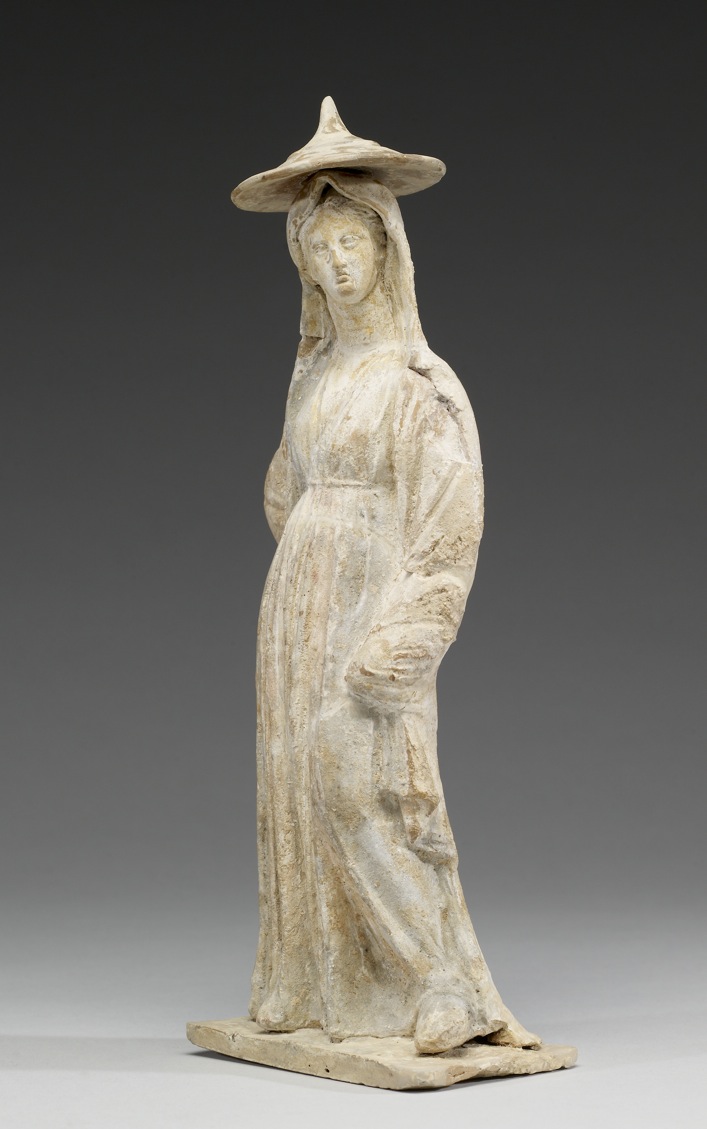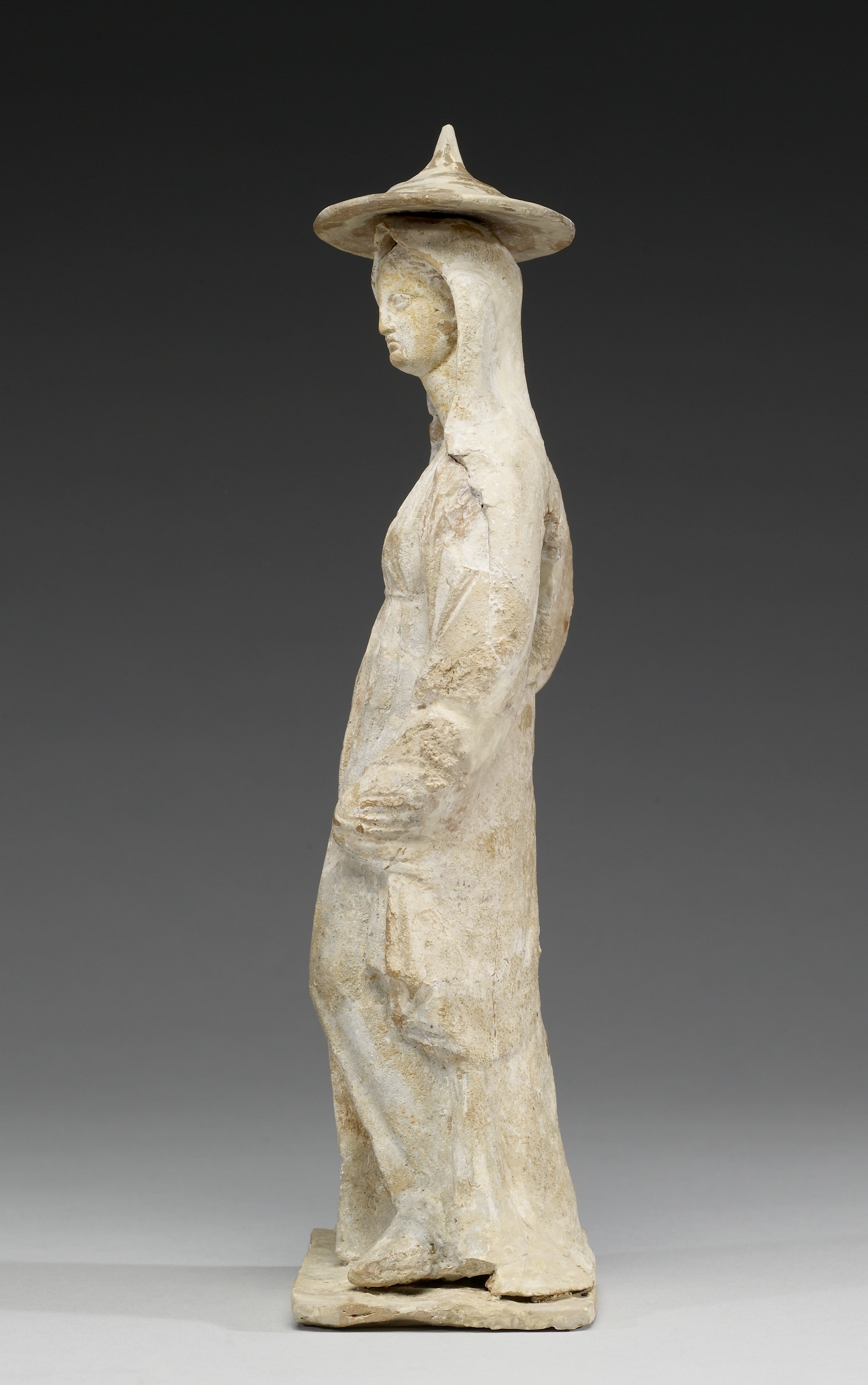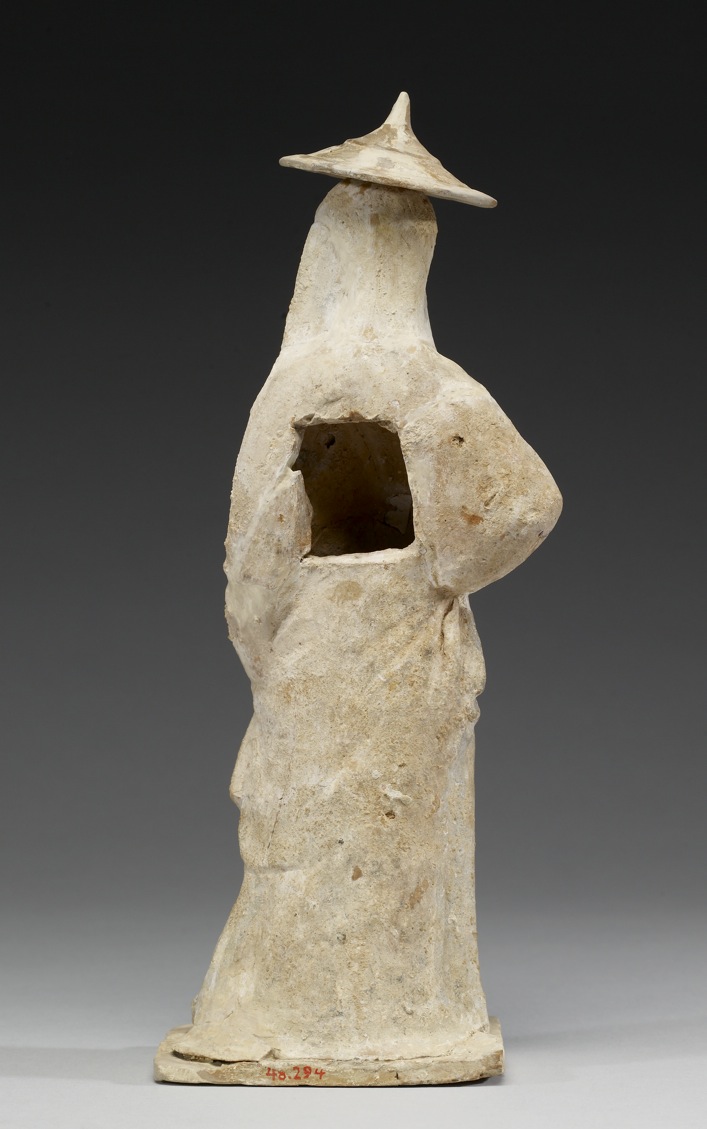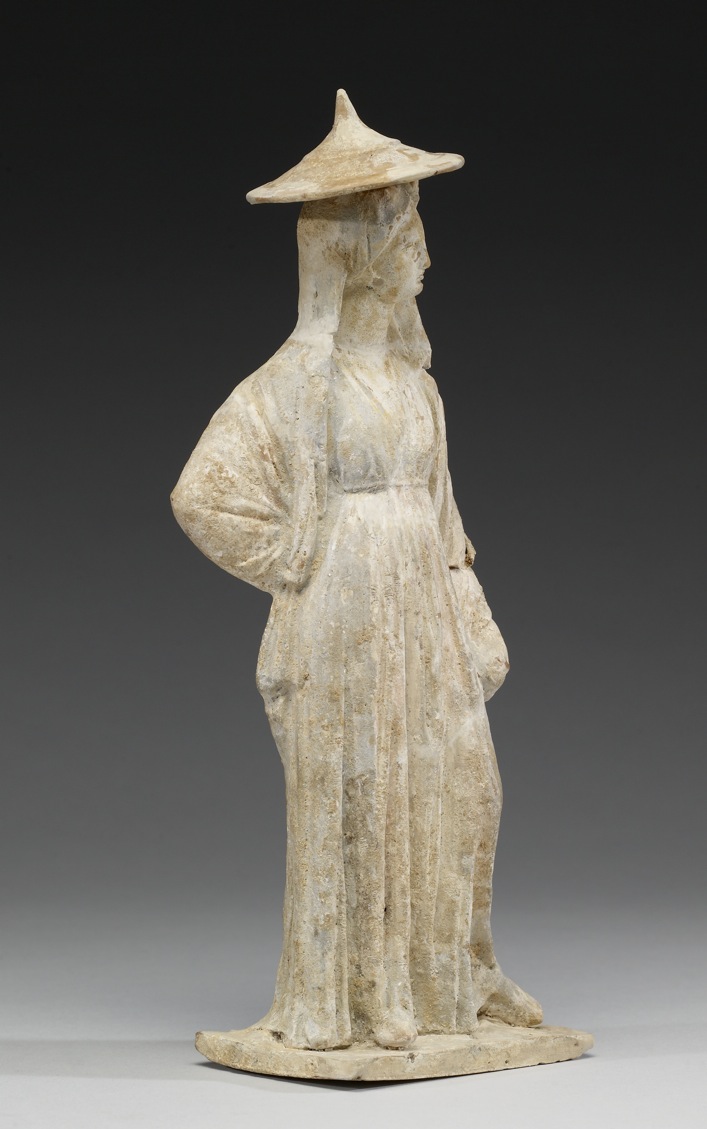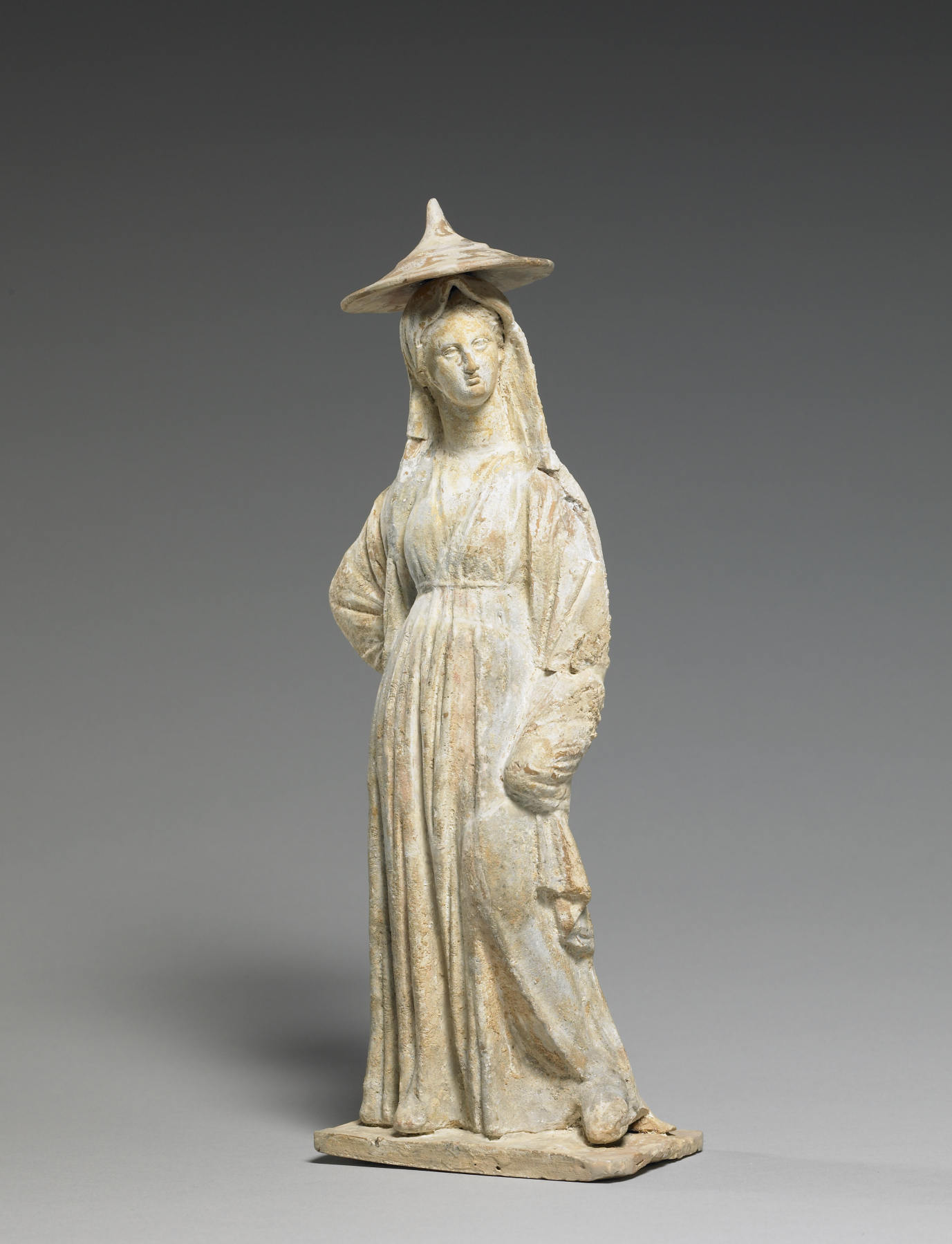Standing Woman with Hat
(Ancient Greece )
Posing with her body frontal and her head turned to her left, this woman appears at ease, resting her weight on her right leg and leaving her left leg free, with her right arm bent behind her back. She wears a wide-brimmed conical hat over her mantle, which is pulled over her head like a veil but left loosely covering her back and exposing her long undergarment. While the statuette is modeled in the round, the drapery is more schematic and flatter on the back. White paint survives on her face and drapery.
One of the best-known creations of Hellenistic artists is a type of terracotta (a reddish-colored clay) figurine that depicts individuals. Most of the pieces are elaborately dressed, graceful maidens. The statuettes were painted to imitate the bright colors and embroidered decoration of women's clothing, made of fine wool or linen. Their faces were highlighted with colors that represented the cosmetics in use, including face powder made of lead soaked in vinegar, rouge from seaweed or mulberries, and black eyeliner made with soot. Many Hellenistic women enjoyed affluent lifestyles, although they played limited roles in public life.
Although generally referred to as Tanagra figurines after the most famous findspot, Tanagra (modern Schimatari) in Boeotia, Greece, statuettes of this type have been found at other sites in the ancient world, including Myrina and Smyrna (modern Izmir) in Asia Minor. The most common forms of the statuettes depict young women sitting, standing, or in the process of graceful movement, but there are also examples showing men or children. The statuettes were used as grave offerings, votives, decorative objects, and perhaps toys. The hair, clothing, skin, and jewelry of the pieces were originally painted, although most of the colors are presently faded.
Provenance
Provenance (from the French provenir, 'to come from/forth') is the chronology of the ownership, custody, or location of a historical object. Learn more about provenance at the Walters.
Joseph Brummer, 1925, [mode of acquisition unknown]; Henry Walters, Baltimore, 1925, by purchase; Walters Art Museum, 1931, by bequest.
Exhibitions
| 1988-1989 | From Alexander to Cleopatra: Greek Art of the Hellenistic Age. The Walters Art Gallery, Baltimore. |
Geographies
Greece or Turkey, Eastern Mediterranean (Place of Origin)
Measurements
10 7/16 x 4 5/16 x 2 5/8 in. (26.5 x 11 x 6.6 cm)
Credit Line
Acquired by Henry Walters, 1925
Location in Museum
Accession Number
In libraries, galleries, museums, and archives, an accession number is a unique identifier assigned to each object in the collection.
In libraries, galleries, museums, and archives, an accession number is a unique identifier assigned to each object in the collection.
48.294


